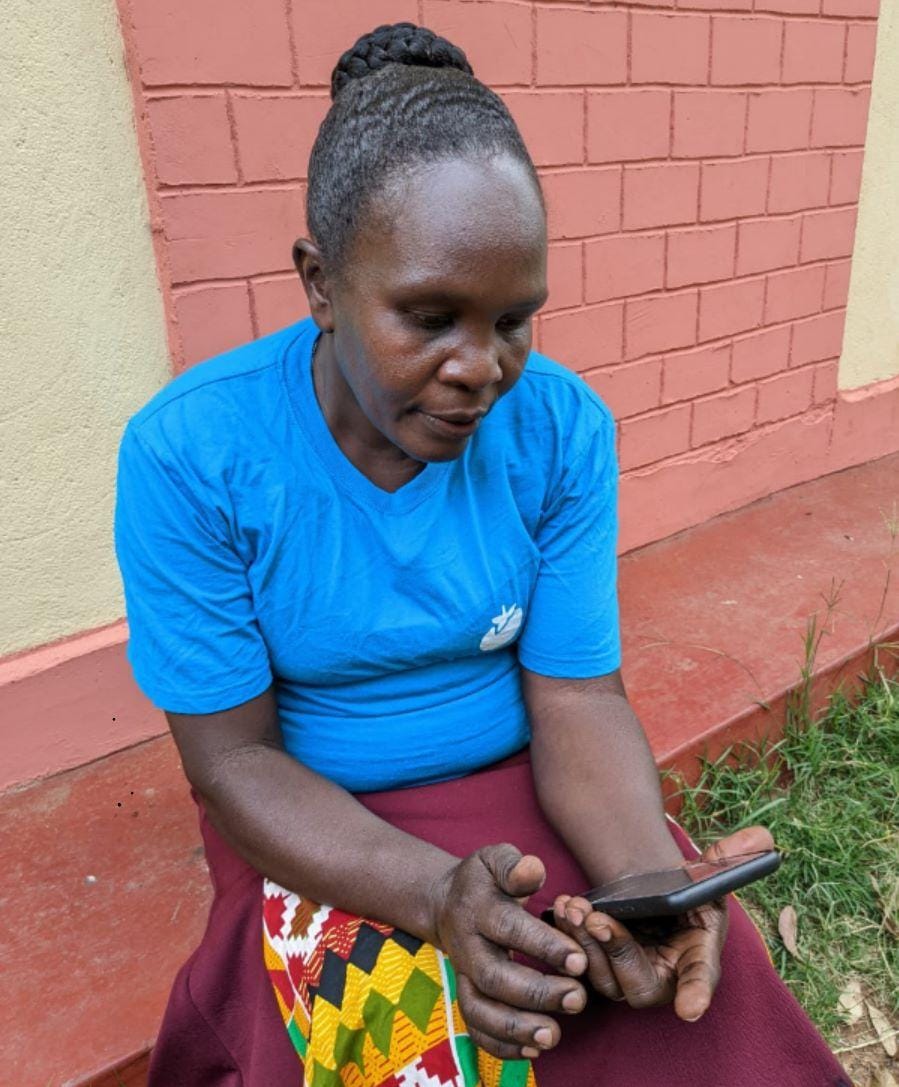Kenyan Farmer Uses SMS to Beat Climate Change
Posted on
In the era of climate change, relying on rain-fed agriculture has become unsustainable. Particularly in Kenya, rainy seasons which typically start from march through May and October through December, after which the weather becomes too dry to support growing crops, have become uncertain. When rains are scarce, farmers risk losing entire crops to drought.

Farmer Everlyne Wafula receiving weather alerts from ishamba platform. Credit: Sam Oduor
Everlyne Wafula, 43, from Kitinda village, Bungoma County has gotten used to uncertain weather. For five years in a row, the weather problem threatened her family’s livelihood. “In 2021, I grew maize and beans on a small scale, and the yield wasn’t good because in one acre, I could only harvest 5 bags of 50kg maize and 30kg of beans,” her harvest was smaller than normal because the rains arrived later than expected.
“My whole life growing up, the rains always came at a certain time,” Everlyne remembered. “The weather is more difficult to predict now than before.” The mother of five also depended on ward agriculture officers for weather prediction. “I had to attend the local chief’s ‘baraza’ to know when it will rain,” she only attended whenever she could.
In 2022, the mother of 5, learned of iShamba from PlantVillage Dream Team, Brian Wachiye. She registered for the free versions of its services. The free version allowed farmers to receive localized weather information that enabled climate change adaptation.

Screenshot of a message sent from ishamba to farmer Everlyne. Credit: Everlyne Wafula, farmer from Bungoma , Kenya
By using data from the Climate Hazard Center, PlantVillage provides weather data in form of short messages through iShamba.
For Everlyne, having access to the iShamba services has been transformative for her farm and livelihood. The platform allowed her to learn about various efforts to help farmers mitigate and adapt to climate change, “I received sms indicating the amount of rainfall to expect in my region.”
The sms was useful to help her plan for planting seasons and determine which crops to plant. She bought farm inputs in time and prepared biochar, a soil amender that she learned from PlantVillage. “The biochar applied in the soil was able to retain water so when there was drought, my maize continued to grow,” she harvested 28 bags of 50kg maize in one acre during the long rains of 2022.

Photo collage of farmer Everlyne Wafula preparing biochar and storing them on sacks. Credit: Mercyline Tata
In the consecutive season, Everlyne decided to plant an early maturing maize variety with beans, based on prediction of less rainfall. “I harvested 32 bags of 50kg maize and sold them to pay my children’s school fees.”
In the future, Everlyne plans to scale up her farming even more, “Come this year, I hope to lease an additional one acre of land and I have already prepared enough biochar to use.” She prepared biochar by burning sugarcane bagasse at high temperatures in the absence of oxygen and charged it with compost manure.
Seeing Everlyne’s successes, other farmers in the community have started to follow her lead. “There are some who just finished preparing compost manure while others have just started preparing biochar.” Everlyne shares the weather predictions from iShamba with others as soon as she receives them.
Enabling farmers to access the localized weather information and training they need will help ensure that millions of rural families can sustainably harvest crops through the years to come.